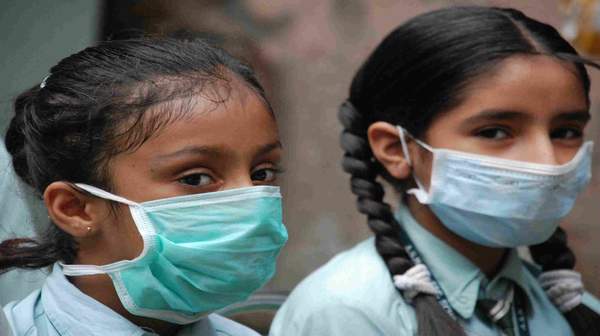What's in this article?
Swine flu, also known as 2009 H1N1 type A influenza, is a human disease. People get the disease from other people, not from pigs.
The disease originally was nicknamed swine flu because the virus that causes the disease originally jumped to humans from the live pigs in which it evolved. The virus is a “reassortant” a mix of genes from swine, bird, and human flu viruses. Scientists are still arguing about what the virus should be called, but most people know it as the H1N1 swine flu virus.
The swine flu pandemic
The virus was first identified in Mexico in April 2009 and was also known as Mexican flu. It became known as swine flu because the virus closely resembled known influenza viruses that cause illness in pigs.
It spread rapidly from country to country because it was a new type of flu virus that few people were immune to.
The pandemic proved to be relatively mild and was not as serious as originally predicted. As in other countries, most cases reported in the UK were mild.
However, a small number of cases resulted in serious illness and death. These were mostly in the very elderly, very young, pregnant women, or people with a pre-existing health condition, such as cancer, that had already weakened their immune systems.
On August 10 2010, the World Health Organization (WHO) declared the pandemic was officially over.

Swine flu (H1N1 and H3N2v influenza virus) facts
- Swine flu is a respiratory disease caused by influenza viruses that infect the respiratory tract of pigs and result in a barking cough, decreased appetite, nasal secretions, and listless behavior; the virus can be transmitted to humans.
- Swine flu viruses may mutate (change) so that they are easily transmissible among humans.
- The 2009 swine flu outbreak (pandemic) was due to infection with the H1N1 virus and was first observed in Mexico.
- Symptoms of swine flu in humans are similar to most influenza infections: fever (100 F or greater), cough, nasal secretions, fatigue, and headache.
- Vaccination is the best way to prevent or reduce the chances of becoming infected with influenza viruses.
- Two antiviral agents, zanamivir (Relenza) and oseltamivir (Tamiflu), have been reported to help prevent or reduce the effects of swine flu if taken within 48 hours of the onset of symptoms.
- There are various methods listed in this article to help individuals from getting the flu.
- The most serious complication of the flu is pneumonia.
How does H1N1 flu spread?
The H1N1 flu virus spreads between people in the same way that seasonal flu viruses spread.
What are swine flu symptoms?
Symptoms of H1N1 swine flu are like regular flu symptoms and include fever, cough, sore throat, runny nose, body aches, headache, chills, and fatigue. Many people with swine flu have had diarrhea and vomiting. But these symptoms can also be caused by many other conditions. That means that you and your doctor can’t know, just based on your symptoms, if you’ve got swine flu. Health care professionals may offer a rapid flu test, although a negative result doesn’t mean you don’t have the flu. The accuracy of the test depends on the quality of the manufacturer’s test, the sample collection method, and how much virus a person is shedding at the time of testing.
Who is at highest risk from H1N1 swine flu?
Most U.S. cases of H1N1 swine flu have been in children and young adults. It’s not clear whether this will change as the 2009 H1N1 pandemic wanes and the virus becomes a seasonal flu bug.
But certain groups are at particularly high risk of severe disease or bad outcomes if they get the flu:
- Pregnant women are six times more likely to have severe flu disease than women who are not pregnant.
- Young children, especially those under 2 years of age
- People with asthma.
- People with COPD or other chronic lung conditions
- People with cardiovascular conditions (except high blood pressure)
- People with liver problems
- People with kidney problems
- People with blood disorders, including sickle cell disease
- People with neurologic disorders
- People with neuromuscular disorders
- People with metabolic disorders, including diabetes
- People with immune suppression, including HIV infection and medications that suppress the immune system, such as cancer chemotherapy or anti-rejection drugs for transplants
- Residents of a nursing home or other chronic-care facility
- Elderly people are at high risk of severe flu disease if they get it. Relatively few swine flu cases have been seen in people over age 65.
Vaccination
The seasonal flu jab is available for free on the NHS for those at risk and is given as an annual injection to:
- adults over the age of 18 at risk of flu (including everyone over 65)
- children aged from six months to two years who are at risk of flu

The flu vaccine is also offered as an annual nasal spray to:
- children aged 2 to 18 years at risk of flu
- children aged two, three and four
- all children in school years 1 and 2






